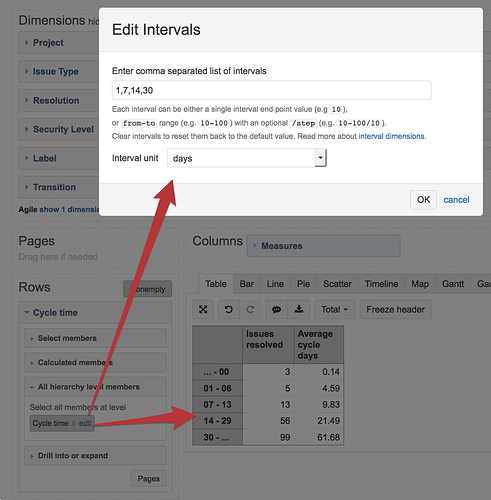Hi all,
I’m trying to modify an existing bar chart that currently does the following things:
- Displays a count of all issues resolved in a JIRA project over a set period of time
- Shows the average resolution time of issues
- Shows a histogram breaking down how many issues were solved in set periods of time (i.e. less than a day, 1 day to 7 days, 8 to 14 days, etc)
Unfortunately due to time that issues have spent being Blocked due to external teams the histogram view doesn’t work well to track how long tickets were actively worked.
Currently the chart is using Issue Type for the Columns (to exclude out Epics, which were skewing data), and Measures for Rows using a variety of custom defined Calculated Members to select out issues Resolved at set intervals.
Example: this is what is set up for the “resolved between 1 and 7 days” calculated member.
CASE WHEN [Measures].[Issues resolved] > 0 THEN NonZero(Count( Filter( Descendants([Issue].CurrentMember, [Issue].[Issue]), DateInPeriod([Issue].CurrentMember.get('Resolved at'), [Time].CurrentHierarchyMember) AND ([Measures].[Issues resolved], [Time].CurrentHierarchy.DefaultMember) > 0 AND DateDiffDays([Issue].CurrentMember.get('Created at'), [Issue].CurrentMember.get('Resolved at')) >= 1 and DateDiffDays([Issue].CurrentMember.get('Created at'), [Issue].CurrentMember.get('Resolved at')) <= 7 ) )) END
What do I need to add in (and where) to have this accurately remove time issues spend being blocked? I’ve been trying to figure this out for several weeks and I’m stumped.
Thanks in advance for your assistance!
